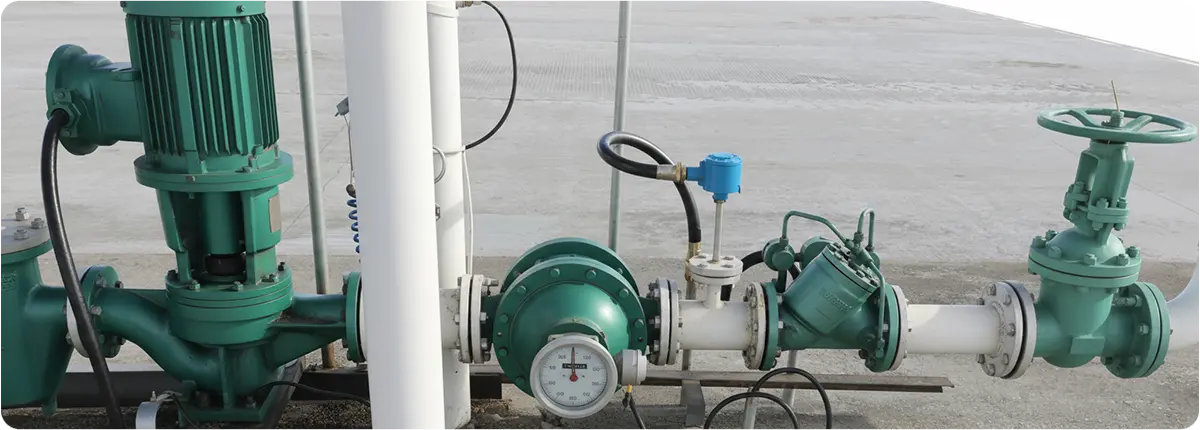Positive Displacement Flowmeters and Industrial Applications
Positive displacement (PD) flowmeters are precision instruments that measure flow by dividing the fluid into fixed volumes and counting these volumes as they pass through the meter. Because they operate on a volumetric principle, they provide excellent accuracy at low flow rates and with highly viscous fluids. They are widely used in oil, chemical, pharmaceutical, food, and automotive industries.

WORKING PRINCIPLE
PD flowmeters measure flow by separating the fluid into known volumes within a mechanical chamber and counting these cycles. Each cycle corresponds to a fixed volume, and the number of cycles is proportional to total flow.
Equation:
Qv = n · Vc
Qv: volumetric flow rate (m³/s), n: cycle frequency (Hz), Vc: chamber volume (m³).
Common types include:
- Oval gear meters
- Piston meters
- Helical rotor meters
STRUCTURAL FEATURES
- Body materials: stainless steel, cast iron, aluminum
- Measuring elements: oval gears, pistons, helical rotors
- Output: mechanical register, magnetic pickup, digital pulse
- Excellent performance with viscous fluids
- Capable of measuring very low flow rates
ADVANTAGES AND LIMITATIONS
Advantages:
- Very high accuracy (±0.1% – ±0.5%)
- Suitable for low flow measurement
- Excellent performance with viscous fluids
- No external power required (mechanical designs)
Limitations:
- Moving parts require periodic maintenance
- Wear from abrasive or particulate fluids
- Limited use in very large pipe diameters
APPLICATION AREAS
- Fuel and oil measurement
- Solvent and polymer measurement in chemical industries
- Syrup, honey, and oils in the food industry
- Precise dosing in pharmaceuticals
- Hydraulic systems for oil flow monitoring
STANDARDS AND CALIBRATION
- OIML R 117: International standard for liquid measuring devices
- ISO/IEC 17025: Calibration laboratory accreditation
- ATEX-certified models for explosive environments
- Regular calibration is essential to maintain accuracy
CONCLUSION
Positive displacement flowmeters provide unmatched accuracy and reliability, especially under low flow and high viscosity conditions. They are indispensable for applications requiring precise dosing and consumption measurement across various industries.
 Convalve
Convalve Convalve
Convalve